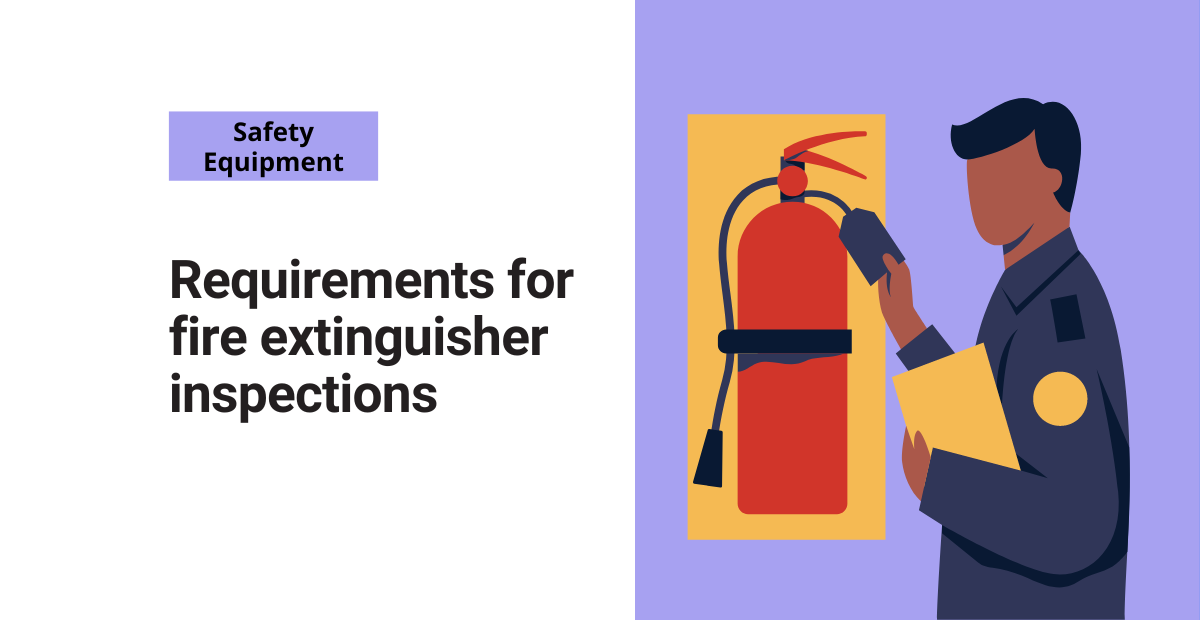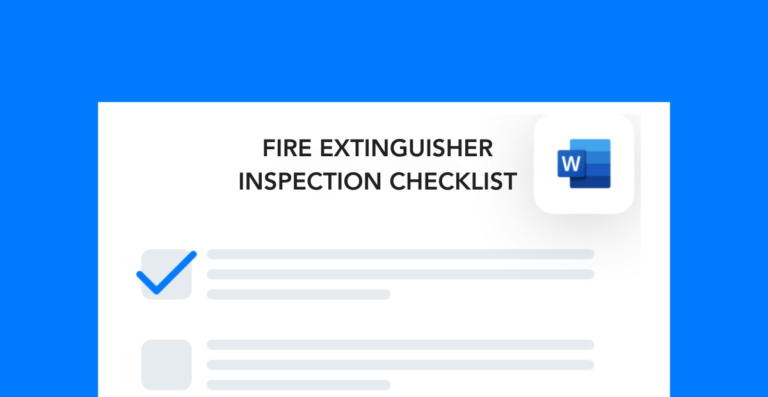Although the total number of warehouse fire incidents has decreased by 74% since 1980, property damages from these fires haven’t fallen quite so sharply. And despite many businesses’ efforts to prevent these kinds of incidents, the best offense is an even better defense.
That’s why the National Fire Protection Association has an entire standard dedicated to portable fire extinguisher inspections requirements. Businesses must follow this standard in order to keep regulatory compliance and to ensure that employees are prepared to handle emergencies quickly and efficiently.
General fire extinguisher inspection requirements
Under NFPA 10, the Standard for Portable Fire Extinguishers, you must inspect fire extinguishers when you first install them and then once a month after the installation.
Here are the requirements for general inspections:
- Any competent person can perform the assessment and they don’t need a certification.
- Sites must maintain a log of all inspections within the past 12 months.
- All inspection documents should include the date and name of the inspector.
It’s also important to note that anyone performing maintenance activities should follow the manufacturer’s guidelines. Maintenance activities should include a detailed inspection of all the fire extinguisher’s components, including the hose, nozzle, and cannister itself.
Lastly, fire extinguishers should always have a label or tag that states the date of the last inspection and the name of the person who completed it.
Hydrostatic inspection requirements
Anyone performing a hydrostatic inspection must be trained and certified to do so. According to NFPA 10, you won’t need to do these types of checks as often. The guidelines say to complete one at least once every 12 years, but this frequency will most likely depend on the use and condition of the equipment.
The NFPA standard also describes labeling requirements for different types of extinguishers:
Low pressure: Requires a label with the inspector’s name and the date/pressure level of the test must be affixed to the cannister.
High pressure: In addition to the low pressure cannister requirements, these extinguishers must also have the test date and tester’s ID stamped into them.
You also want to make sure that you complete hydrostatic tests in a secure area with the proper tools. Without the right environment, you can create a major safety hazard.
Extinguisher storage and accessibility
The best way to ensure a successful fire extinguisher inspection is to store your equipment in accordance with NFPA guidelines. These guidelines state that businesses need to have signage indicating the location of the closest fire extinguisher.
It’s a no-brainer that the equipment should always be accessible and close to areas with a high potential for fire ignition. This includes anywhere that workers might perform hot work activities, as well as near combustible substances and equipment.
The full recommendations include details on height requirements, which you can view on the NFPA’s location and placement fact sheet. By adhering to these guidelines, you not only create a safer work environment for your employees but you also protect your fire extinguishers from unnecessary wear and tear.




